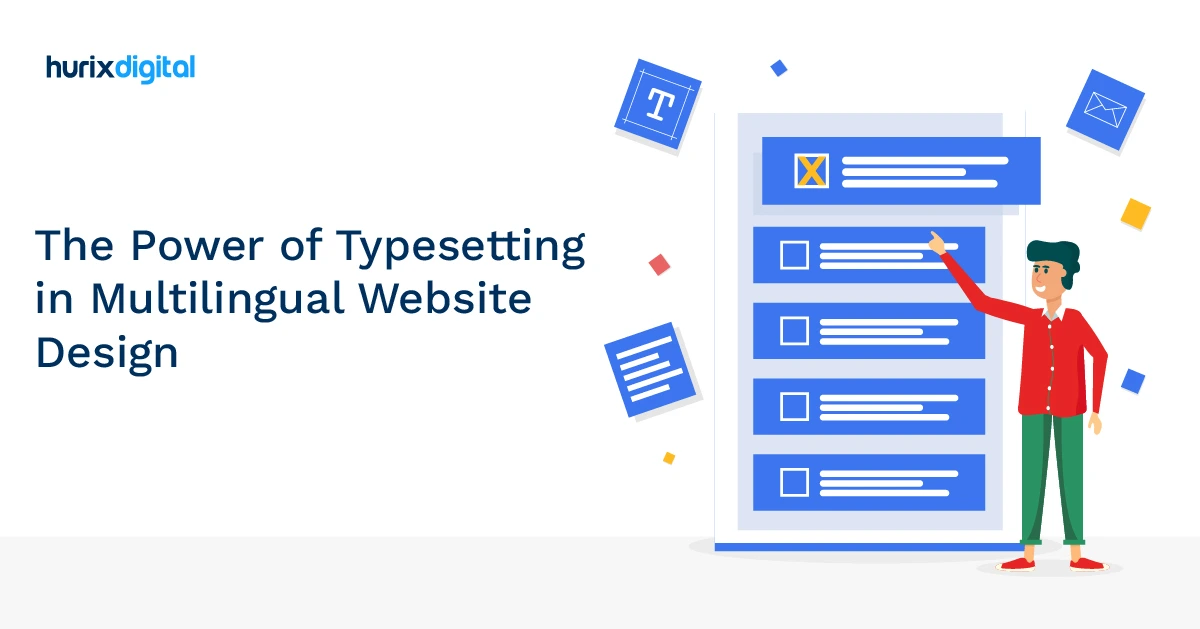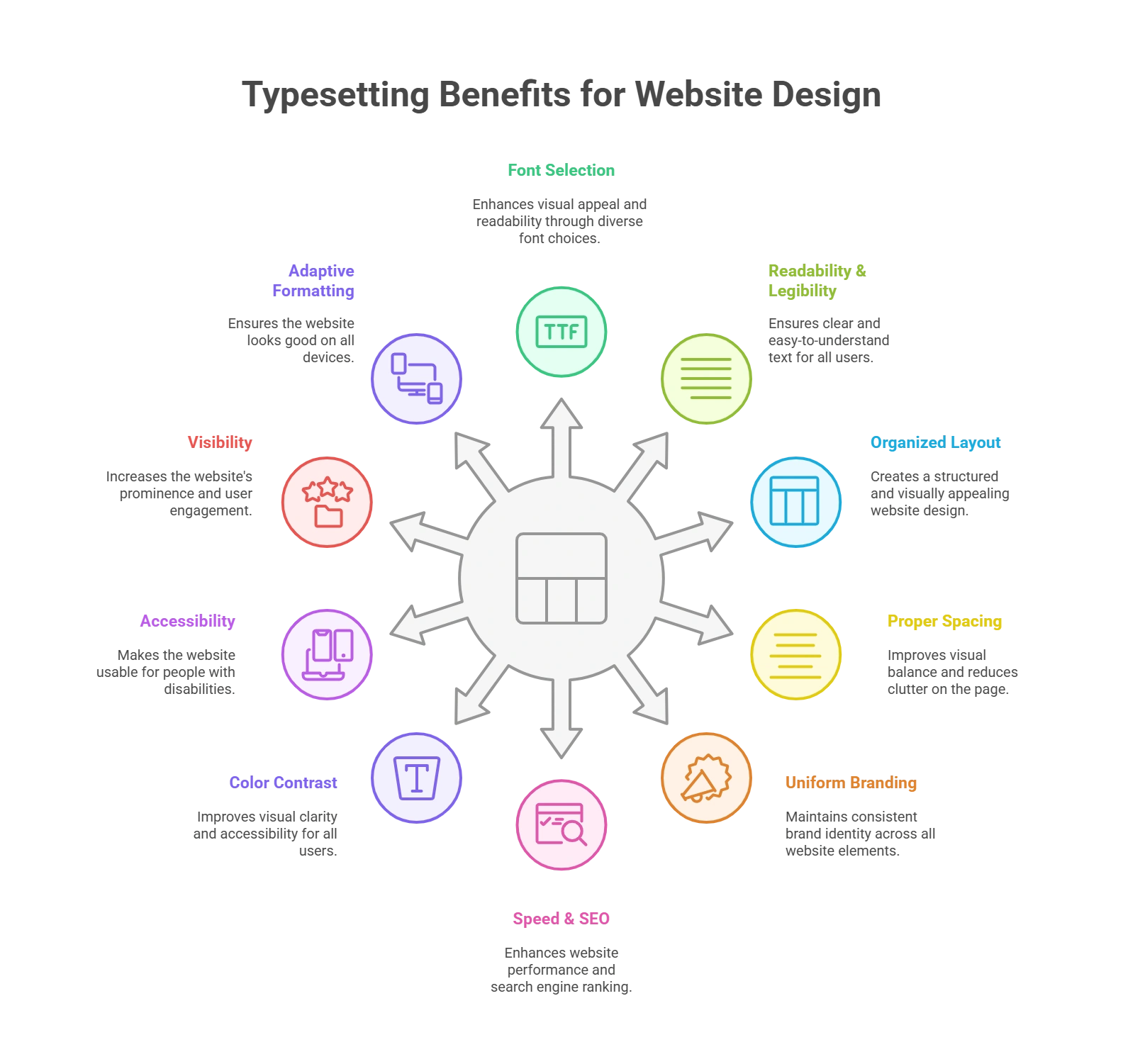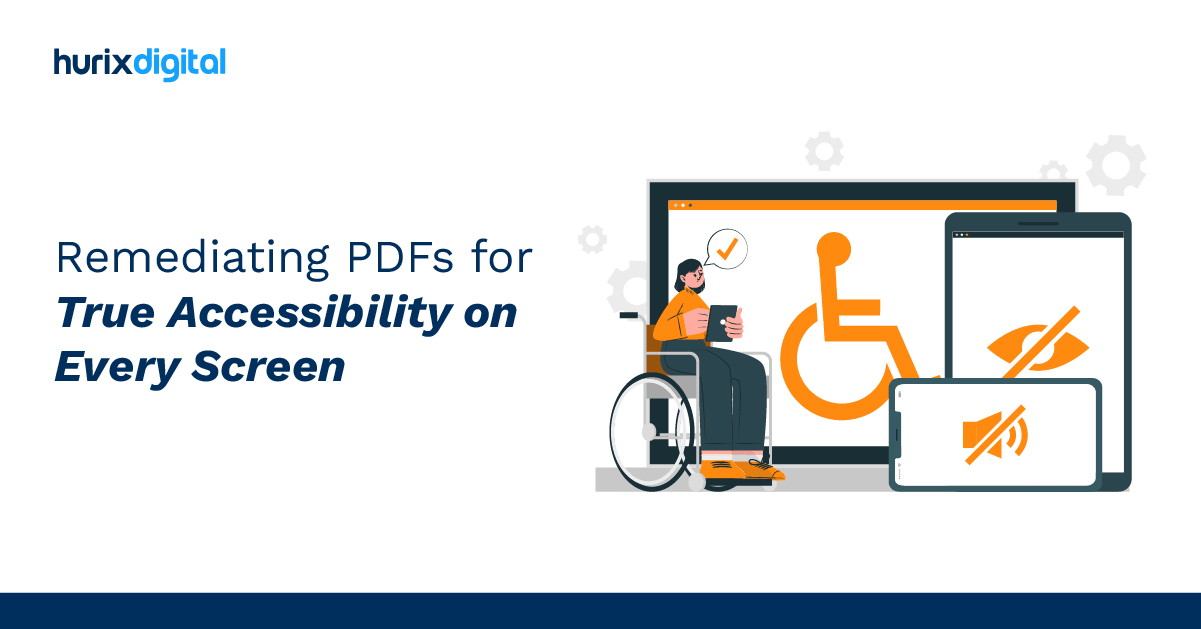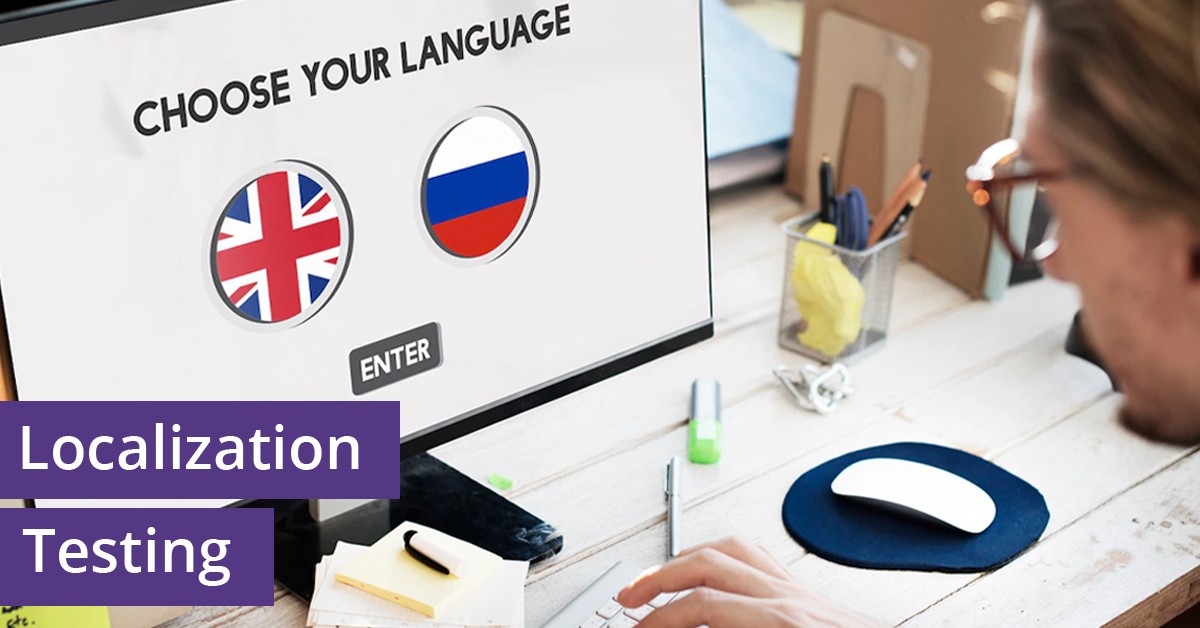
The Power of Typesetting in Multilingual Website Design
Summarize with:
At its core, language serves as our primary instrument for connecting diverse peoples. Yet, for a vast majority of published materials like books and magazines, language often acts as a barrier, limiting our ability to engage with and understand different cultures.
To truly foster global communication, it’s important to address this challenge directly. We must seek innovative ways to bridge the gaps between varied mother tongues and cultural backgrounds.
Considering that approximately 7,000 languages are spoken globally, the need for a robust and versatile typesetting approach becomes clear. This is where specialized services like Text Typesetting come into the picture, offering solutions to craft compelling and inclusive multilingual experiences.
Table of Contents:
- What is Typesetting?
- What are the Types of Typesetting?
- How Does Typesetting Improve Global Communication?
- Multilingual Canvas- A Value-Adding Opportunity
- How Can We Address Language Challenges with the Multilingual Canvas?
- 10 Ways Typesetting Can Improve Your Website Design
- Conclusion
What is Typesetting?
Before diving into the nuances of website typesetting, let’s first demystify what is typesetting and how it plays a pivotal role in shaping the appearance of text, both on the web and in print.
Typesetting is the art of arranging text and graphical elements on a page or screen to create visually appealing and easily readable content. Think of it as the design and layout process for written material. It’s the magic wand that transforms a plain block of text into something inviting, engaging, and coherent.
Book typesetting primarily focuses on print but can also make a huge difference in the digital world. Previously, this was usually performed by a dedicated typesetter and done manually. But today, typesetting software has become a game-changer, allowing designers and creators to select and update fonts, spacing, and formatting effortlessly.
With AI-powered typesetting services, this process has only become simpler. With intelligent design recommendations and ready-to-use templates, AI is transforming typesetting and making it more efficient for users who may not be aware of design concepts.

What are the Types of Typesetting?
If you want your content to be accessible to as many people as possible, then you must think about typesetting from a global perspective. This means making sure that you choose typefaces and fonts that can be read by all types of readers, even those who don’t speak your language or don’t have perfect vision.
Here are two types of typesetting that can enhance global communication:
1. LaTeX Typesetting
LaTeX is a markup language used for typesetting documents such as books, papers, and articles. It’s free and open-source software (FOSS), which means that anyone can use it for free.
Many different tools make using LaTeX easier, including TeX Live, LyX (which we will not discuss in this article), and MikTeX. These tools help you format your document and compile it into something readable by humans.
2. Adobe Typesetting
Adobe has a similar program called Adobe InDesign CS6, which allows you to create documents without having to learn another markup language, such as LaTeX, Markdown, or any other FOSS alternative. InDesign CS6 is proprietary software (closed source), which means that you have to pay for it if you want to use it legally.
It also includes features not found in other programs, like Auto-hyphenation and automatic page numbering.
How Does Typesetting Improve Global Communication?
We live in a global age where we communicate with people all over the world, and often, their native language is a preference. This is no small task, but it’s a responsibility we should embrace.
Different languages display letters, numbers, and symbols differently. For example, Arabic typography is written from right to left, and Hebrew letters are written from left to right. Even within the same language, words can be displayed differently depending on their meaning or context.
There must be no barriers between users, such as language barriers or cultural differences, that would prevent them from communicating effectively with each other.
In this context, typesetting serves as a critical tool in overcoming these linguistic and cultural barriers, facilitating clearer and more effective global communication. It helps present content in a way that feels natural and intuitive to native speakers, thus enhancing understanding and engagement.
Good typesetting also handles variations within the same language, ensuring that contextual or regional differences are accurately represented. This attention to detail bridges the gap between diverse audiences, making global communication more inclusive and effective.
It’s a key component in breaking down language barriers and fostering a deeper, more respectful exchange of ideas across cultures.
Multilingual Canvas- A Value-Adding Opportunity
The multilingual canvas is a valuable tool for individuals, such as translators or business professionals, who aim to produce documents that cater to diverse language needs. The significance of the Canvas lies in its ability to:
- Facilitate typesetting in a language environment
- Maintaining page layouts across languages
- Enables translation between languages without the need for designing layouts for each document.
The resulting document might contain words or phrases that may not be suitable for certain languages. This issue can be resolved by utilizing a text box that assigns the language code to all the text.

How Can We Address Language Challenges with the Multilingual Canvas?
The issue of catering to multiple languages is multifaceted, encompassing technology, social dynamics, and human behavior. The ultimate goal of the canvas is to create a platform that enables people worldwide to express themselves without the need to learn languages or grapple with translation tools.
The multilingual canvas serves as a content management system specifically designed to facilitate the effortless creation of websites. It holds importance for the following reasons:
1. Enabling the Creation of Content
Content can be effectively created in multiple languages simultaneously. This means that if you need to develop a website catering to an English-speaking audience while also desiring a version of your site, you can achieve this by working from one source file.
2. Simplifying the Process of Editing
The process of editing a page in different languages is simplified without duplicating the efforts. For instance, if you wish to make changes on one page, you only need to do it. Those modifications will automatically reflect across all instances of that page.

10 Ways Typesetting Can Improve Your Website Design
Now that we have answered the question “What is typesetting?”, you may wonder why you need it. It’s all about readability and appeal, which follow principles similar to book typesetting. It’s essential for creating a fantastic web experience.
So, without further ado, let’s dive into the ten ways typesetting can improve your website design:
1. Improves Font Selection
Fonts aren’t just a matter of aesthetics; they convey your brand’s personality and message.
With typesetting, the primary focus is ensuring the font selection is appropriate and ideal for your customers.
So, experiment with fonts that align with your website’s tone and purpose. A playful font for a children’s website or a sleek, professional one for a business site can make a world of difference.
2. Focus on Readability and Legibility
Readability and legibility are critical elements of typesetting and ensure that your design or fonts do not compromise how easy your website content is to consume.
Effective typesetting ensures that your text is easy on the eyes. This means choosing the right font, font size, and line spacing. A well-typeset website allows visitors to effortlessly consume your content without strain or frustration.
This greatly enhances the overall design and legibility of your website.
3. Creates an Organized Layout
Layout is where typesetting truly shines.
The page layout greatly determines the result of websites. A harmonious layout guides visitors through your website, helping them find what they’re looking for without requiring too much navigation. This improves user experience and keeps them engaged on your page.
4. Ensures Proper Spacing
Proper spacing is the unsung hero of typesetting. If your website content looks cluttered or has too many white spaces, it can give a negative impression to the visitor.
Adequate margins, padding, and line spacing make your content appear clean and organized. The proper spacing ensures that your text isn’t crowded, making it easier to read and absorb.
5. Uniformity in Branding
Typesetting is a powerful tool for reinforcing your brand identity.
By focusing on the consistent use of fonts, colors, and typography styles across your website, you can reinforce your brand and increase recall.
6. Improves Speed & Boosts SEO
Website speed is enhanced using optimized images and graphics that blend perfectly with your page content.
Efficient typesetting practices, such as optimizing images and minimizing unnecessary code, can improve loading times, ensuring visitors don’t abandon your site due to slow performance. This indirectly improves the website’s search engine optimization (SEO) and ranking.
7. Improves Color Contrast
Most designers sometimes underestimate the power of textual content compared to the design. Thus, they may use too bright or faded colors when laying out textual content, making the text harder to read and comprehend.
Typesetting ensures that this doesn’t happen. The fundamental principle of typesetting ensures that text color matches the WCAG AA requirements of a desktop or mobile and has a proper blend of brightness, color contrasts, and spacing.
For example, if the website background is lighter or white, the text will be dark or black to ensure it is easy to read.
8. Enhances Accessibility
With proper typesetting, your website can be a lot more accessible, especially for individuals with disabilities. You can use fonts that are easy to comprehend and even maintain adequate contrasts and spacing to allow users to increase font size and accommodate various users.
9. Boosts Visibility
Since the website is more engaging and user-friendly, users are more likely to engage with the content. Engaged visitors are likelier to stay on your site, explore its offerings, and convert into customers or followers.
The increased engagement also improves the visibility of your website, boosting your site’s SEO.
10. Supports Adaptive Formatting
Today, a website is seen on numerous devices and screens, not just laptops or desktops. So, the entire layout and the text should have adaptive formatting, which will change depending on the screen size and platforms used. Be it the e-reader, smartphone, desktop, laptop, tablet, or other devices, the typography and alignment get adjusted automatically and optimized for the particular device or screen.
Most AI-enabled typesetting software will support adaptive formatting options, especially for website design.
Conclusion
Typesetting is not just about the aesthetic or design of your website; it is a methodology that can completely revamp your website’s appeal and accessibility. By paying attention to the nuances of typesetting, you can create a website that looks great and delivers an exceptional user experience, making your content more accessible, engaging, and memorable to your audience.
Looking for professional typesetting services for your website or publication? Hurix Digital is geared to support you in meeting all your publishing needs. With our AI-based publishing platform, you can get in-house expertise and advanced technology assistance to get the best dynamic typesetting for your website.
Get in touch with us today to get started.
Summarize with:

Vice President – Content Transformation at HurixDigital, based in Chennai. With nearly 20 years in digital content, he leads large-scale transformation and accessibility initiatives. A frequent presenter (e.g., London Book Fair 2025), Gokulnath drives AI-powered publishing solutions and inclusive content strategies for global clients
 Upcoming Masterclass | Build an Army of Brand Evangelists using Training & Development | November 20th, 8:30 AM PDT | 11:30 AM EDT | 10:00 PM IST
Upcoming Masterclass | Build an Army of Brand Evangelists using Training & Development | November 20th, 8:30 AM PDT | 11:30 AM EDT | 10:00 PM IST





